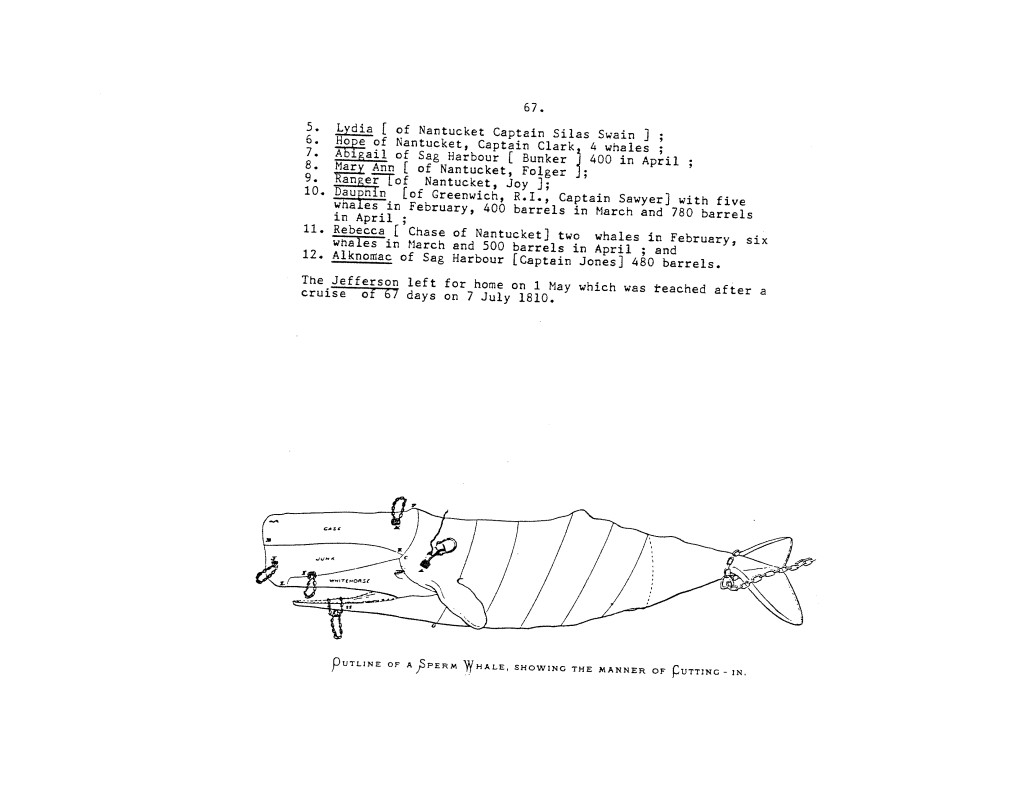\
THE MATERIAL
Ethan Rutherford
-

All these notes come from a binder I put together years ago—back when the scale and the scope of this particular project seemed clear to me. It’s not that way now, and the pieces that have survived are sort of the flotsam of a feverish summer and style I no longer have access to. Oh well, that happens! Here was the project: I was going to write Moby Dick 2 (Moby Dicker?). It seemed like a good idea at the time. The joy in going through these notes recently, though, came in seeing exactly where my attention flagged with the project, where it sharpened, and the ways in which this research, which I had considered to be the Lost Work of a Lost Summer, has actually informed much of my subsequent work without my knowing it at all.
This is the raw material that I was gathering—the moments, at the time, I thought I might want to hit—and the details I thought would breathe life into the experience of this crew. I sort of love this diligent note-taker of yesteryear, who wanted to make sure that when the writer sat down to get to work on a book about a whaling voyage he would remember that “Typhoons [are a] huge problem.”
This book isn’t dead, by the way. It’s just reconfiguring itself. And “Ocean Songs” is the beginning of that reconfiguration.
-

I did most of my research in the New Bedford Whaling Museum’s Research Library, and they wouldn’t let you take the books home. But you could make copies, and so copies I made. Here is the scrap that gave me the setting for the present action of the story. I liked the way it sounded, I suppose.
-

Here’s the flensing diagram that must’ve sparked an association with the way an orange is separated from its skin.
“The work that needs to be done is done and the animal is peeled in a piece like an orange and spun violently while done so, slick and dripping, and hoisted for deposit above the deck hanging there like a heavy curtain before being cut to horse pieces and bibled and tossed into the Cast Iron to cook itself usable.”
-

Get to know your ships!
-

I wish I owned the book where I found this particular image/chapter. It was a shockingly beautiful and brittle book about the strange and mythical (or: “reputed”) creatures of the sea, and actually did more to pull me into the story I was trying to tell than anything else. Which isn’t to say that “Ocean Songs” is about the Kraken (though, briefly, it was going to be), only that it was that sense of wonder and danger that opened the hatch onto this particular ship—the Halcyon—for me. It’s what got me aboard, so to speak, and opened me up to the sea itself.
-

This project has grown into a collaboration between the Seattle-based composer Peter C. Murray and myself: “Ocean Songs” (which is a tentative title, an homage to the album by The Dirty Three) is one part text and one part music. And posted here is the original music meant to accompany, or occupy, the text. Our suggestion, our hope: that you push play and return to the text of this piece so that you hear the music as you read the story.



